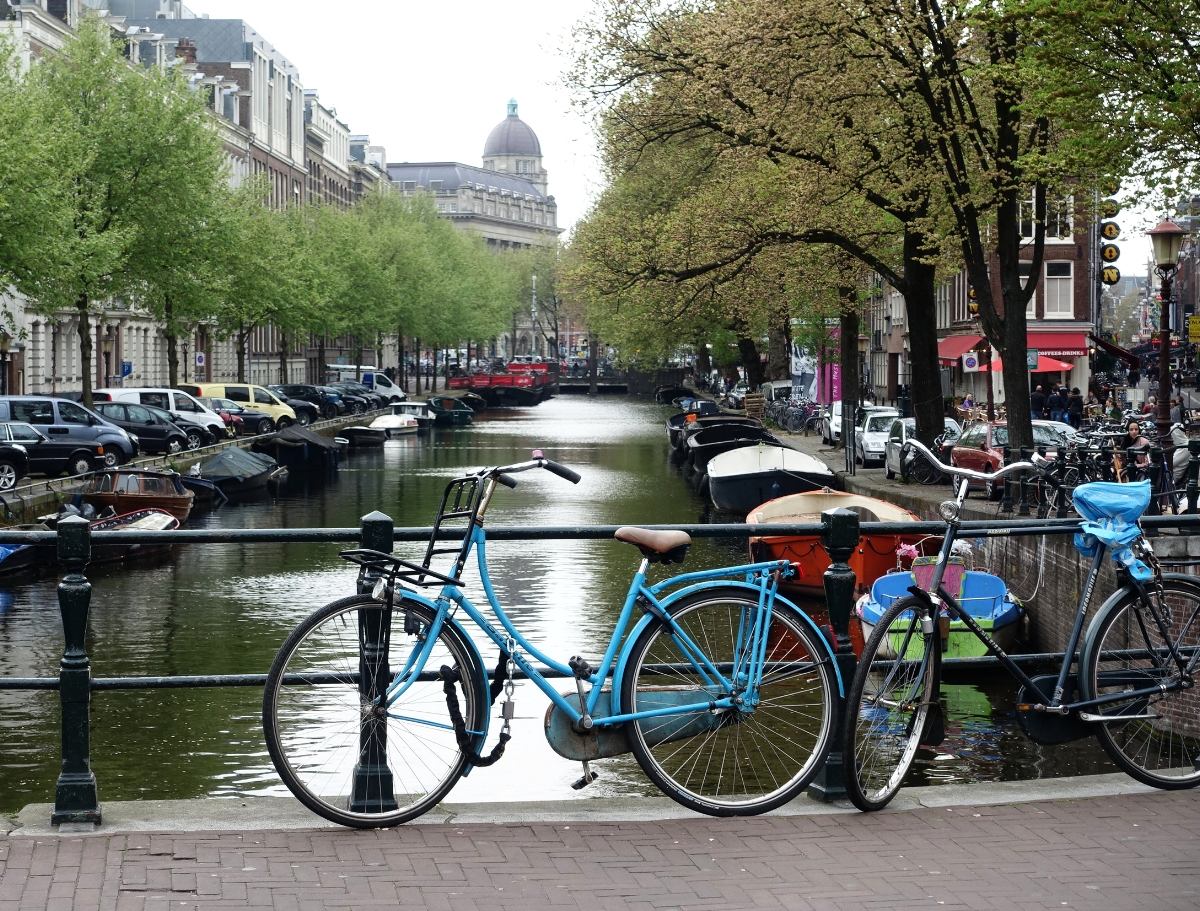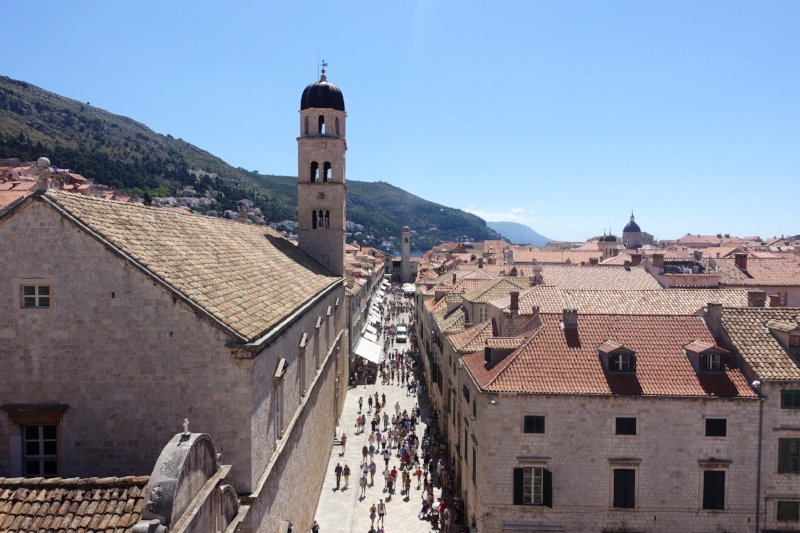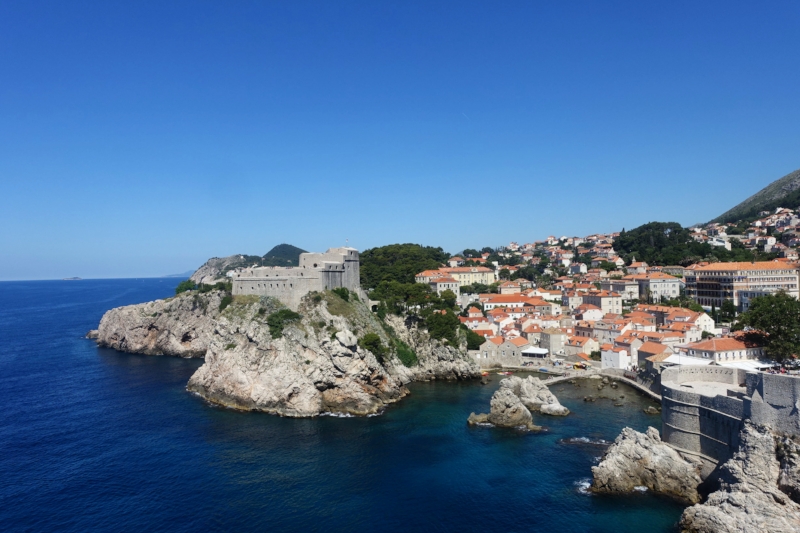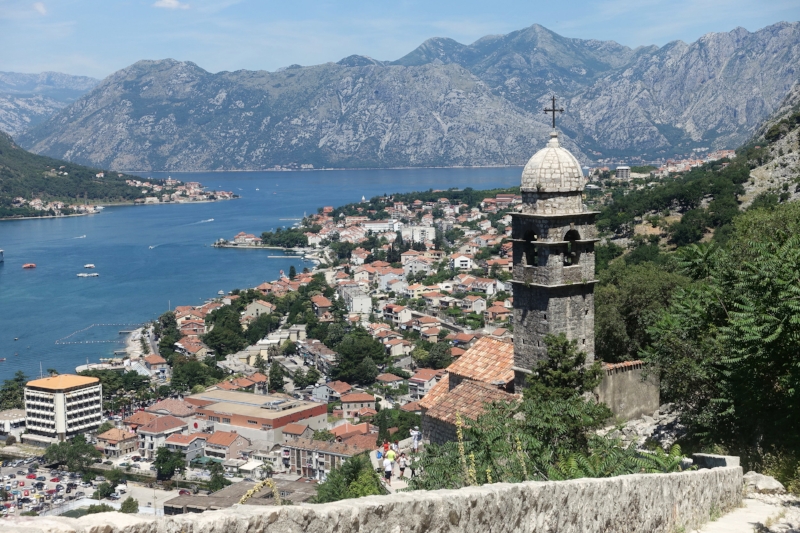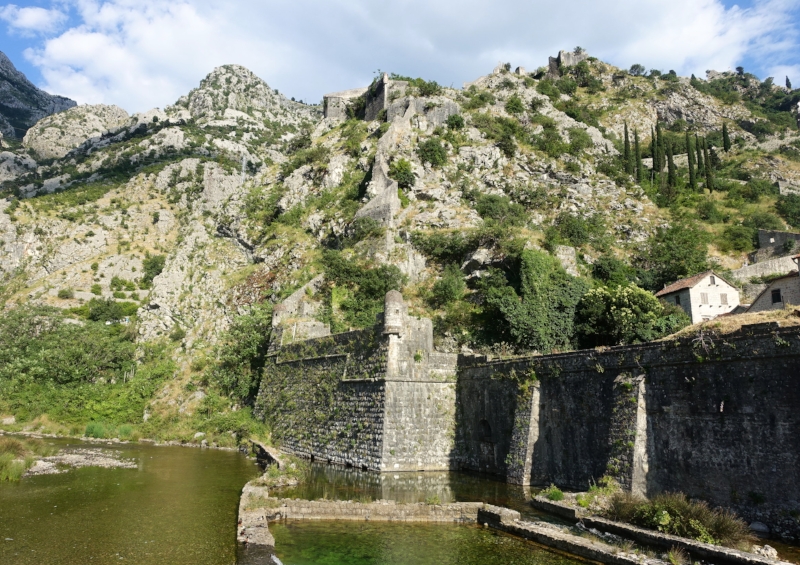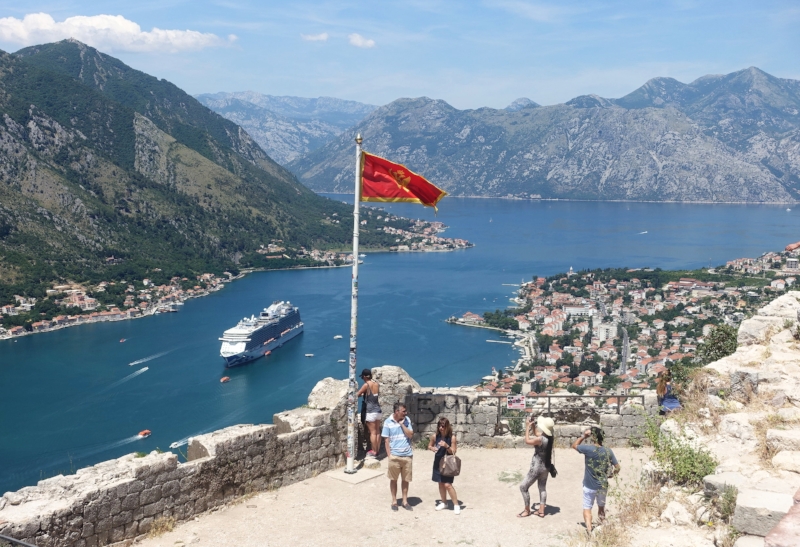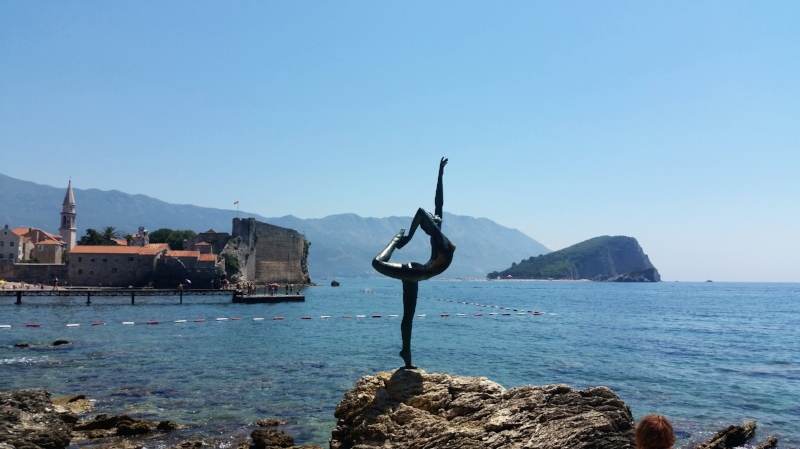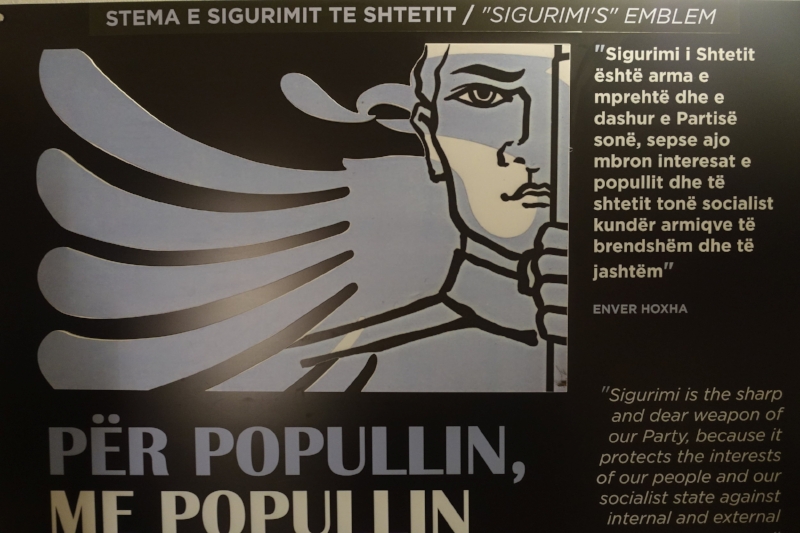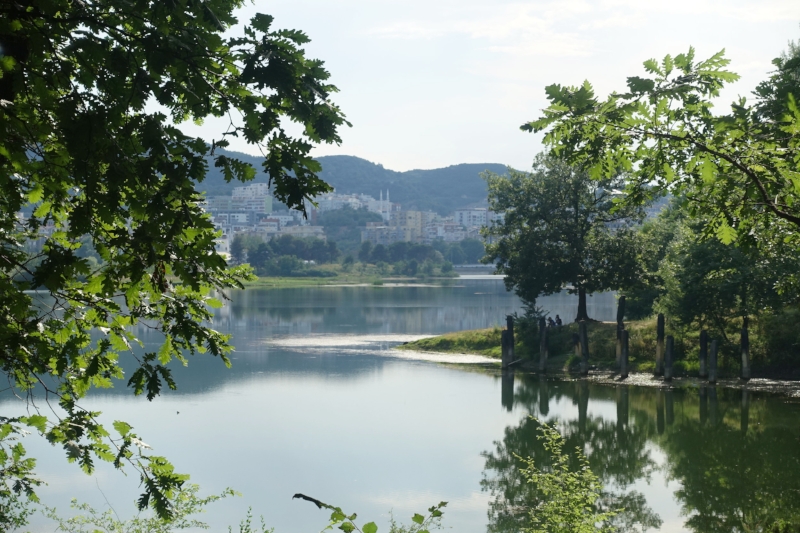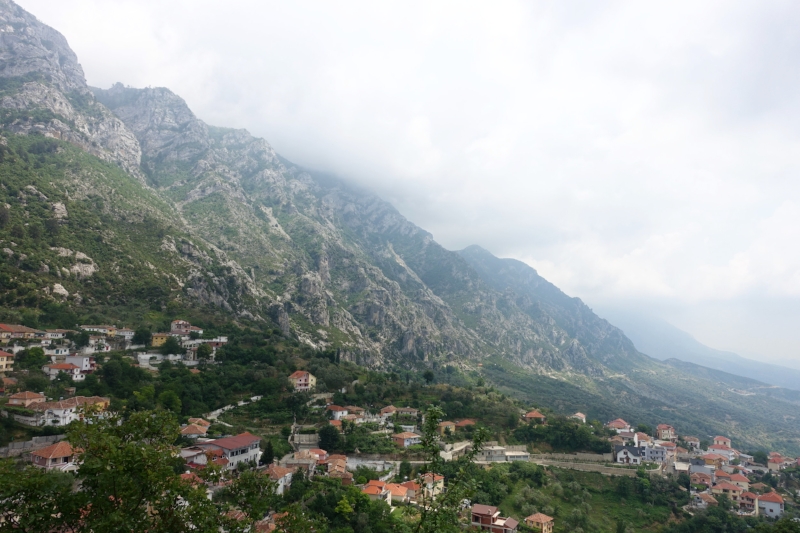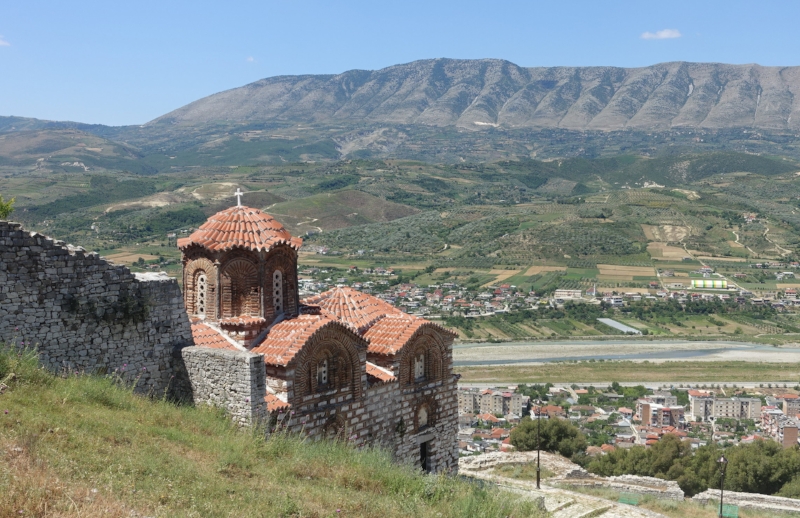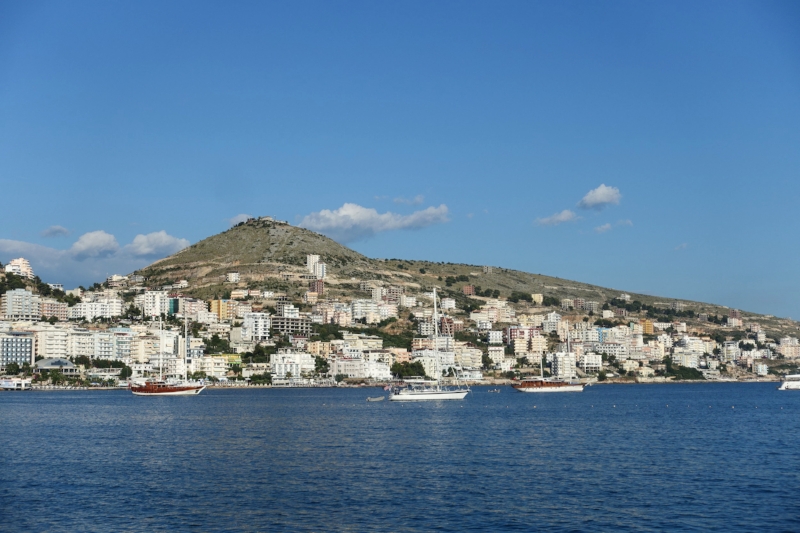Spring Sunshine in the Western Balkans
/BUDVA, MONTENEGRO
Introduction
This post describes a road trip we did traveling through the Western Balkans, that is the region that sits on the Eastern Adriatic and Ionian Seas. We started in Dubrovnik, Croatia, and moved south through Montenegro and Albania before arriving on the Greek island of Corfu. The trip took two weeks and was made in glorious late Mediterranean spring sunshine, with temperatures from the mid 20’s to the low 30’s.
Dubrovnik
Stradun, the main street of dubrovnik
Long before the breakup of Yugoslavia in the early 90s the wonderfully preserved/restored UNESCO World Heritage listed, medieval city of Dubrovnik was attracting visitors from all over the world. I’d visited in the autumn of 1986 and even then, there were plenty of tourists about. Fast forward 30 years, Croatia is independent and part of the European Union, and throw in the fact that Dubrovnik was used as a location for the very successful television series Game of Thrones, and you have a recipe for tourist saturation.
view of durovnik from the walls
Despite the hoards the city was still magnificent. The quintessential thing to do, if you only do one thing in Dubrovnik, is walk the city walls. The walls completely encircle the city and are just under 2 kms in length. At 150 Croatian Kuna, that is $AUS30/ €20 it isn’t cheap. But, the views of the town are worth it.
a lot of people do the walls walk so expect queues
Churches, museums, and other historic buildings abound. And yes, you can do a Game of Thrones tour if that’s your thing.
the rooves of the old town
Personally, I’d rather eat a cevapi (a skinless Balkan sausage) and a have a local beer. Cevapi (aka Cevapcici in some places) is best eaten with a local eggplant and red capsicum-based sauce called ayvar.
cevapi, ayvar (the orange stuff) and chips
For a change of pace, we also had a beach day in Dubrovnik on the peninsula just south of the old town, in an area known as Lapad Bay.
Our prior research as to beaches around Dubrovnik (i.e. we googled “Dubrovnik’s best beaches”) brought up a site that stated that Dubrovnik had a lot of “concrete beaches”, which were popular with people who didn’t like sandy or pebbly beaches. We weren’t sure what these were until we walked the shoreline around the peninsula, and sure enough, there were lots of concrete banks and platforms all along the waterfront, with plenty of people occupying them. In many areas, there are only rugged rocks leading into the sea providing nowhere to sit and making accessing the water hazardous. The Croatians have solved this problem by concreting in between the rocks in lots of places, sometimes in sections only big enough for one or two people, in other places with great concrete slabs.
a couple chilling on a lapad concrete beach
We took up residence on one such concrete beach and had a jolly time of it.
Kotor
kotor
Our next stop was Kotor in Montenegro, just a two or so hour bus ride south of Dubrovnik (depending on how long the border crossing takes). The small country of Montenegro (a third the size of Switzerland) is incredibly mountainous. The mountains that line the massive fjord that Kotor sits on are 1000 metres high.
inside kotor's stari grad
Like Dubrovnik Kotor has an old town (Stari Grad) and it is also UNESCO World Heritage listed. It is smaller than Dubrovnik’s old town but is equally well restored, at least within the confines of the city walls. On the outside of the walls, adjacent the three city gates, it is less “polished” than Dubrovnik.
What Kotor has that Dubrovnik doesn’t have are dramatic mountain fortifications. These were built during the period that Kotor was part of a province of Venice (1420 to 1797). The walls snake impossibly up the side of the mountains behind the city.
fortifications of kotor wind their way up the mountains behind the city
For the energetic you can walk up the steps of the fortifications to the Castel St. John. It costs €3 and a fair bit of huffing and puffing.
the view from castel st. john
But the views are breathtaking.
Budva
the view from inside budva's old town looking south
A half hour bus ride from Kotor is the town of Budva. This is a popular beach destination for Montenegrins and others. It also has a Stari Grad situated at the end of a small peninsula jutting into the Adriatic. It was destroyed by an earthquake in 1979 but has been restored.
There are also plenty of beaches nearby for cooling off.
the dancing girl statue
On the way to Mogren Beach, a short walk west of the old town, everyone stops to take a shot of the sculpture, “The Dancing Girl”.
mogren beach
Budva turned out to be a good choice for a day trip from Kotor.
Tirana
From Kotor, we caught a bus to Tirana, capital of Albania. The 200km trip took around 5 hours, including a slow, but uneventful border crossing. We didn’t know what to expect of Tirana. Albania in general tends to still have a bit of an image problem in the West. But we were pleasantly surprised. We had three days in Tirana. We walked all over the city. It felt very safe and not at all the image we had of grim, cold-war style architecture. People were friendly and helpful and many spoke English.
The main square, Sheshi Skenderbej has undergone a recent face-lift.
the main square, tirana
If you follow the wide Bulevardi Deshmoret e Kombit one kilometre south from Sheshi Skenderbej you reach Mother Teresa Square.
mother teresa square getting ready for a ploitical rally
Albania’s recent past has been difficult. Under the communist regime of Enver Hoxha, which lasted from 1944 until 1991 (though Hoxha died in 1985 his one-party government continued to rule) the country isolated itself from the rest of the world, and operated a brutal system of labour camps where many people were executed or died from disease or starvation.
A new museum, opened May 2017 in Tirana is housed in the building that was the headquarters of the Albanian Security Police, the Sigurimi. It is known as the House of Leaves. The museum goes into depth as to the methods used by the Sigurimi and the experience of the Albanian people during the Communist period. It is well worth a visit. Cost is 700 leks /$AUS7.50 / €5.20
Close to the House of Leaves is BunkArt 2. This museum is housed in an old Communist era bunker. Hoxha built around 700,000 of them across the nation due to his paranoia regarding possible invasion and attack. We thought that it would be an art gallery due to the name (we didn’t research it before hand) but it turned out to be of a very similar theme to the House of Leaves – Albania’s repressive past and the methods used by the regime.
propoganda poster (inside bunkart 2)
If you’re limited for time we’d advice just visiting one or the other, but if you’re into this topic, then both a well presented. And yes, there’s a BunkArt 1, but it’s out from the centre of Tirana so less accessible if you’re staying in town.
Also central is the Parku Kombetar, which is a large green-space with an artificial lake. It’s a nice area for a walk, but like much of Albania, there is a serious rubbish problem in parts and the lake looks pretty polluted.
parku kombetar
We stayed close to the up-market Biloku area, where restaurants and bars are abundant.
fruit and veggie shopping in downtown tirana
Despite it being the capital we found it cheap by western standards – food, accommodation, attractions – all around half or even a third what we’d pay in Australia for comparable quality. Some examples: Three star hotel room $AUS55/€37 per night (with breakfast); restaurant meal $AUS20 -30 /€13 – 20 (with drinks) for 2 people; taxi – official taxis (yellow) use meters and are cheap.
Kruje
tourist market, kruje
A good day trip from Tirana is Kruje, the ancient capital and home of Albania’s great national hero Gjergj Kastrioti aka Skanderbeg (Skenderbej) That’s his statue in the main square which is also named after him. He was an Albanian noble who fought the Ottomans in the 15th century.
skenderbej
His stronghold was Kruje, where he withstood several sieges from Ottoman invaders. Kruje is in the mountains an hour’s drive from Tirana.
the citadel
You can visit the remains of the castle (Skanderbeg’s citadel) and visit the Skanderbeg Museum (200 lek). The local bus from Tirana to Kruje costs 100 lek/$AUS 1.10/€0.75 each way.
mountainous kruje
Berat
Our next stop was the small city of Berat around a 2 hour bus trip south of Tirana (400 lek). Berat is known as the white city due to the uniform white Ottoman-era buildings.
BERAT
It is also a UNESCO World Heritage site. Most notable is Berat Castle which sits high above the city. Entry to the site is just 100 lek/$AUS1.10/€0.75. A fortress of some sort has been on this site for over 2500 years. The 10 hectare castle and fortifications are really a small town, with many people living here in the Ottoman and Byzantine period buildings.
byzantine church in castle precinct
Not surprisingly there are great views of the city below from all around the castle and environs.
view of berat from the castle
We want to give a special mention to our favourite restaurant on this road trip – Lili’s Homemade Cooking of Berat. It’s a small, family-run restaurant in the old town. They serve traditional Albanian food with the menu explained in pictorial form.
perusing the menu at lili's
Ilya (the owner) and his family have lived in the house for over 250 years. It’s the number 1 Trip Adviser rated restaurant in Berat and deserves the rating. If you go make sure you try the tomato and eggplant dish (all dishes are good, but this was exceptional) and wash it down with the home-made red wine. Fantastic and not expensive. We went twice. Click here to see their review.
Saranda
saranda
From Berat we caught the bus to Saranda, in the south of the country near to the border with Greece. From Berat there are only two buses per day – 8.00 am and 2.00 pm and they are only 16 seaters, so get there at least half an hour before departure.
Saranda is a beach resort town. Being late June and the beginning of the holiday season there were plenty of tourists about. Most appeared to be local Albanian families, day trippers from Corfu (which is only a half hour fast ferry ride away), or cruise ship passengers (there was one in on our second day).
contemplating corfu from saranda
It’s a pleasant enough spot for a dip in the Med and for gazing across at Corfu to the south.
one of the abundant albanian car washes
Note: Curiously, everywhere we went in Albania, people were busily washing cars. There appeared to be more car washes per population than anywhere else in the world. Can’t explain why.
Corfu
the beach at gouvia
A 45-minute ferry ride from Saranda and we were in the Greek island of Corfu. This was the end of the journey. The cost one-way was €19. We had a couple of days enjoying the late spring sunshine in the town of Gouvia, 6 km north of Corfu Town, the main town.
Conclusion
mural - national history museum, tirana
All in all an excellent trip down a coast and through a region that, in parts, gets a lot of tourist attention, but in other areas, there is still a lot to be discovered. In particular, we really enjoyed Albania. We felt a strong sense that the country is getting ready for the tourism boom, that hasn’t yet arrived, but is not far off. So, watch Albania, it’s going to happen.
Ken and Cally

